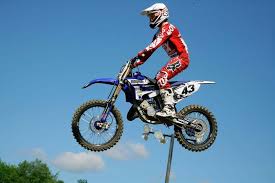A serious accident involving young motocross rider Cameron Thurston has shaken the local sports community in Delaware. The 17-year-old, who had been training at a regional off-road track, was involved in a high-impact crash on Saturday afternoon. While the exact circumstances are still under investigation, the incident has renewed attention on rider safety and emergency response protocols in the motocross world.
What happened
According to posts circulating on social media, Thurston lost control during a jump sequence, causing his bike to land awkwardly. He was transported to a nearby hospital with multiple injuries — including a suspected fracture and concussion. While medical officials have not released his identity or prognosis, those close to the rider confirm that family and friends are rallying to support him.
Why this story matters
Amateur and semi-pro motocross is popular in the region, offering young athletes the opportunity to compete and hone their skills in disciplines that demand both physical fitness and technical precision. But the sport also comes with high risk of injury: a 2017 study found that off-road motorcycle crashes account for substantial emergency-room visits, particularly among teens. Thurston’s crash illustrates the tension between nurturing athletic ambition and ensuring safety.
Community reaction
Local motocross clubs and spectators expressed shock at the news. One trainer shared: “Cameron was always careful, respected the track and community. This goes to show how quickly things can change.” A fellow rider added: “We’ll all slow it down this week and make sure straps and helmets are double-checked.” Organizers at the event have confirmed they are reviewing footage and procedures, intending to reinforce safety briefings going forward.
Insight and context
While many tracks require safety gear, this incident prompts a fresh look at enforcement and track design. Experts recommend that facilities regularly audit jump angles, landing zones, and rider skill-level matching. “In motocross, what separates a fun ride and a tragedy is often a half-second misjudgment,” notes a sports-medicine specialist who sees rising numbers of fractures and head-trauma cases in young riders.
What to watch
The immediate concern is Thurston’s recovery and whether long-term impacts will affect his ability to return to competitive riding. Beyond that, the wave of reaction may lead local clubs to adopt stricter protocols—such as tiered jump levels based on rider age/experience and mandatory pre-ride safety checks.
As the community prays for Cameron’s recovery and reflects on the excitement and hazards of motocross, one thing remains clear: ensuring the safety of young athletes must be as much a priority as encouraging their dreams.






